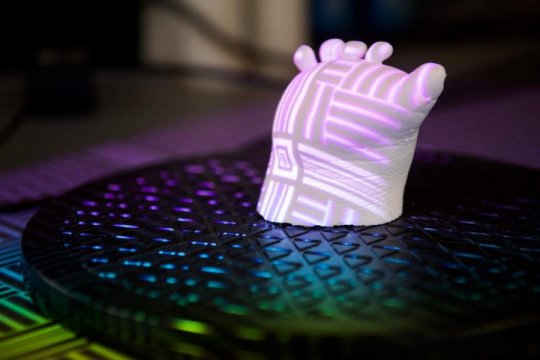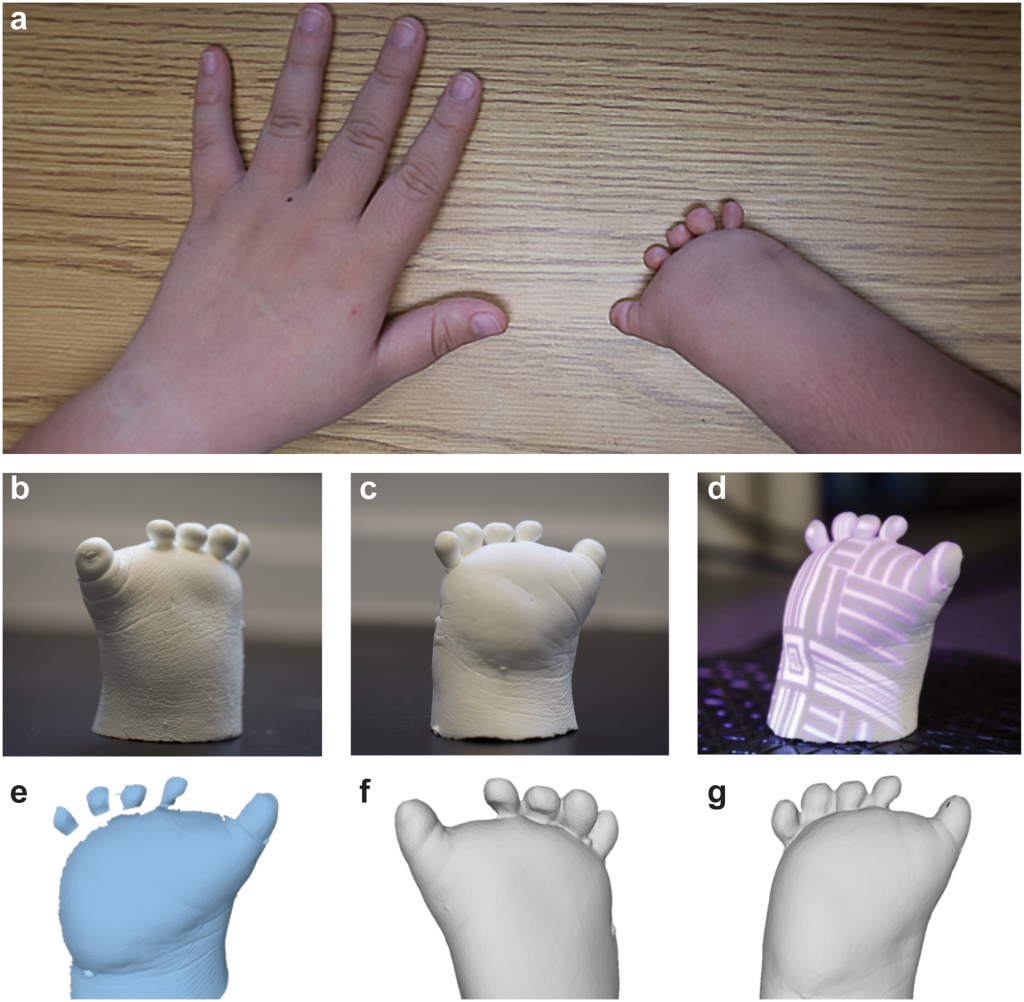3D Printed Low Cost Amniotic Band Prosthetics Conform to the Body, Equipped with Electronic Sensors
 The stories we have followed regarding 3D printed prosthetics over the years have been amazing, not only due to the incredible innovations we see coming forth from desktop 3D printers, but also because they change people’s lives. And the momentum just keeps going too, with prosthetics becoming more elaborate, functional, and accompanied by electronics. Now, even more intricate interfaces are being integrated into prosthetics as Blake Johnson, assistant professor in industrial and systems engineering at Virginia Tech, works with his undergraduate researchers to increase their functionality.
The stories we have followed regarding 3D printed prosthetics over the years have been amazing, not only due to the incredible innovations we see coming forth from desktop 3D printers, but also because they change people’s lives. And the momentum just keeps going too, with prosthetics becoming more elaborate, functional, and accompanied by electronics. Now, even more intricate interfaces are being integrated into prosthetics as Blake Johnson, assistant professor in industrial and systems engineering at Virginia Tech, works with his undergraduate researchers to increase their functionality.
The team is installing electronic sensors in prosthetics, placing them directly at the device and the tissue of the wearer. This allows them to compile data about the prosthetics in terms of well they function and how comfortable the person wearing them continues to be. These prosthetics are useful also because they are ‘conformal 3D prints,’ meaning that they conform to the body, created with a curved surface.
Yuxin Tong was the head author of the paper published about this research study, ‘Low-cost sensor-integrated 3D-printed personalized prosthetic hands for children with amniotic band syndrome: A case study in sensing pressure distribution on an anatomical human-machine interface (AHMI) using 3D-printed conformal electrode arrays.’ The authors focused on the need for anatomically conformal systems like wearables and human-machine interfaces (HMIs). For this work, they 3D printed prosthetic hands for children born with a common birth defect called amniotic band syndrome (where bands from the amniotic sac break off and wrap tightly around other parts of the body while the baby is still in the womb).
“Hopefully, every parent could follow the description from the paper we published and develop a low-cost personalized prosthetic hand for his or her child,” Tong said, who goes on to state that he hopes these types of studies and engineering projects will reach as many individuals in need as possible.
The researchers created the prosthetics by converting a 3D scan into a 3D printing file for the device, featuring a form-fitting cavity.

The mold of local teen Josie Fraticelli’s hand that was scanned during the development of a personalized prosthetic. (Photo credit: Logan Wallace, Virginia Tech)
“Personalizing and modifying the properties and functionalities of wearable system interfaces using 3D scanning and 3D printing opens the door to the design and manufacture of new technologies for human assistance and health care as well as examining fundamental questions associated with the function and comfort of wearable systems,” said Professor Blake Johnson, who was inspired by a colleague’s daughter, born with amniotic band syndrome.
At the time of the project, Josie Fraticelli was 12, and still experiencing disability in her right hand as development (while she was still a fetus) stopped right where the knuckles begin. Johnson and the designers kept tweaking the prosthetic hand, and as one thing led to another, the device’s design was refined over and over—helping them with their research too. The researchers were able to figure out the best spot for placing the sensing electrode arrays for evaluating pressure distribution.

a) Photograph of the participant’s limb malformation associated with amniotic band syndrome. Photographs of the hand cast from dorsal (b) and palmar perspectives (c). d) Photograph of the hand cast during 3D scanning showing the interaction between a representative structured-light pattern and the object. e) Point cloud data from a single scan highlighting the 3D scanning process. Assembled digital models of the participant’s hand geometry shown from dorsal (f) and palmar (g) perspectives.
“The mismatch between the soft skin and the rigid interface is still a problem that will reduce the conformity,” said Tong. “The sensing electrode arrays may open another new area to improve the prosthetics design from the perspective of distributing a better balance of pressure.”
For individuals wearing prosthetics around the world, a lot has changed in terms of customizations, affordability, and accessibility. This is due in great measure to people who really care, along with designers and engineers who have put many thoughtful hours into creating new ways to produce prosthetics for amputees of all ages, including children in India, veterans overseas, and even dogs.
What do you think of this news? Let us know your thoughts! Join the discussion of this and other 3D printing topics at 3DPrintBoard.com.

3D scanning and 3D printing create a flexible computer-aided manufacturing platform for design and rapid prototyping of personalized wearable systems with a focus on the creation of low-cost personalized prosthetic hands with sensor-integrated anatomical human-machine interfaces (AHMIs) for children with amniotic band syndrome
Subscribe to Our Email Newsletter
Stay up-to-date on all the latest news from the 3D printing industry and receive information and offers from third party vendors.
Print Services
You May Also Like
3D Printing Financials: Prodways Ends 2024 with a Profit
After a tough couple of years, Prodways (EPA: PWG) is starting to bounce back. The French 3D printing company finally made a profit in 2024, improved its operating performance, and...
Blue Origin & Auburn University Use EOS M290 to Study Copper 3D Printing
Blue Origin, the commercial space company built off of investments from Amazon founder Jeff Bezos, has donated two EOS M290 powder bed fusion (PBF) printers to Auburn University’s National Center...
Rocket Lab to Acquire Restructured Laser Communications Provider Mynaric AG
Rocket Lab USA, the Long Beach-based, end-to-end space services company that specializes in producing rockets with additive manufacturing (AM), has announced plans to acquire Mynaric AG, a German provider laser...
3D Printing Financials: Stratasys Ends 2024 with Cost Cuts and Growth Plans
Stratasys (Nasdaq: SSYS) has wrapped up 2024 with stronger margins but a full-year net loss. The polymer 3D printing leader navigated a year of economic headwinds, restructuring efforts, and shifting...



























